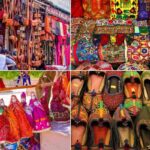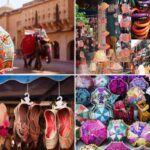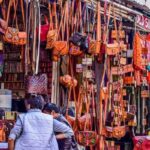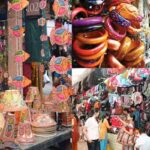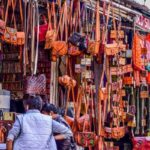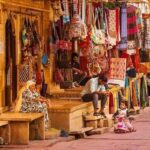7 Handicrafts to Buy in Rajasthan is a treasure trove of handicrafts, reflecting its rich cultural heritage. Block-printed textiles, like Sanganeri and Bagru prints, are famous for their intricate designs and vibrant colors. Bandhani (tie-dye) fabrics, available in saris, dupattas, and turbans, are a must-buy. Jaipur’s blue pottery is another unique craft, known for its eye-catching cobalt blue patterns. Puppets (Kathputlis) are traditional Rajasthani toys, often used in folk performances. Mojari (leather shoes), especially from Jaipur and Jodhpur, are stylish and comfortable.
Jewelry, including Kundan and Meenakari, showcases Rajasthan’s exquisite craftsmanship. Marble and stone carvings, especially from Udaipur, make for beautiful home decor. Pichwai and Phad paintings are traditional art forms that narrate stories of gods and folklore. Lastly, Rajasthani quilts (Jaipuri razai) are lightweight yet warm, perfect for gifting. These handicrafts offer a glimpse into Rajasthan’s vibrant culture and artistry.
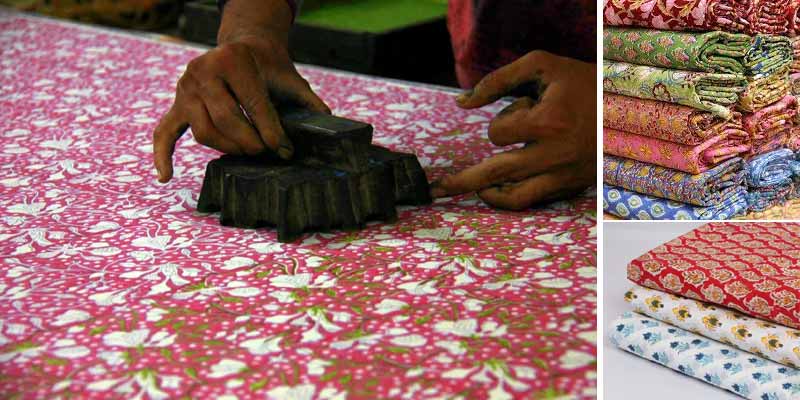
Block-Printed Textiles:
Origin: Jaipur, Bagru, and Sanganer.
Details: Famous for intricate hand-block printing on textiles, these fabrics often feature floral and geometric designs. They are used for making sarees, dupattas, bedsheets, and more.
Jaipur, Bagru, and Sanganer are renowned for their distinctive block-printed textiles, each region offering unique styles and techniques.
Jaipur is celebrated for its vibrant and intricate designs. The city’s block-printed textiles often feature traditional motifs like paisleys, florals, and geometric patterns. Jaipur’s textiles are known for their bold colors and elegant designs, making them popular for garments such as sarees, salwar kameez, and home furnishings like bedspreads and cushion covers.
Bagru, a town near Jaipur, specializes in a distinct style of block printing known for its earthy colors and natural dyes. Bagru prints often include traditional patterns like indigo designs and simple motifs, which are achieved through resist dyeing techniques. This style is prized for its sustainable approach and rustic charm, commonly seen in textiles like quilts, dupattas, and tablecloths.
Sanganer is famous for its fine, delicate prints often featuring intricate floral patterns. The town’s textiles are characterized by their soft textures and refined designs, ideal for elegant sarees, scarves, and home décor items like curtains and table linens.
Each of these regions contributes to the rich tapestry of Rajasthani block printing, offering a range of styles to explore and appreciate.
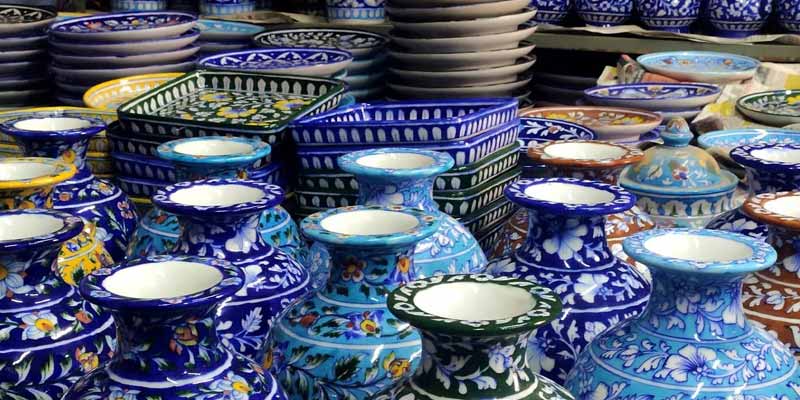
Blue Pottery:
Origin: Jaipur.
Details: Known for its unique blue dye, this pottery is famous for its striking blue, green, and white patterns. It includes decorative items like plates, vases, and tiles.
Blue pottery from Jaipur is a distinctive and cherished craft known for its vibrant blue glaze and intricate designs. This traditional art form dates back to the Mughal era and is characterized by its use of cobalt blue dye, which gives the pottery its signature color.
Features of Blue Pottery:
- Designs: The patterns often include floral motifs, geometric shapes, and traditional Rajasthani designs. Each piece is hand-painted, showcasing the skill and artistry of local craftsmen.
- Items: You can find a variety of blue pottery items such as vases, plates, bowls, and tiles. These pieces are both functional and decorative.
- Materials: Made from a blend of quartz, glass, and clay, blue pottery is lightweight yet durable.
- Technique: The pottery is fired at low temperatures, giving it a unique, smooth finish.
For authentic blue pottery, visit Jaipur’s Johari Bazaar or the Blue Pottery Factory. Each piece is a testament to the rich cultural heritage of Rajasthan.
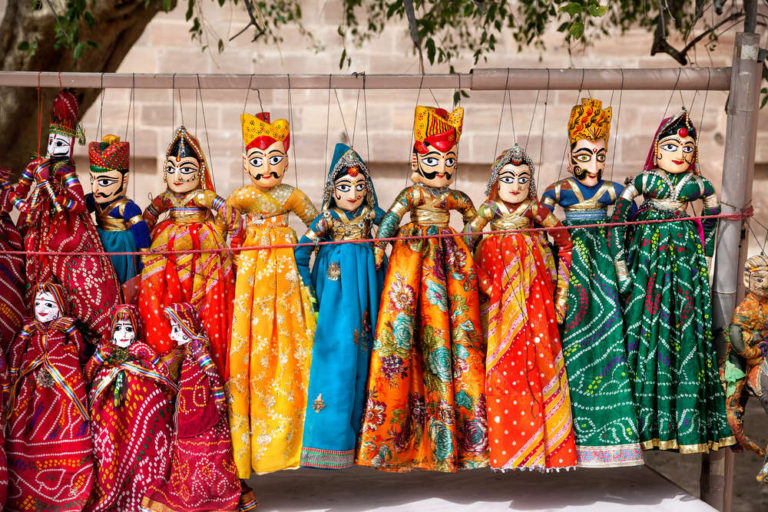
Puppets (Kathputli):
Origin: Jaipur and Jodhpur.
Details: Traditional Rajasthani puppets made of wood and dressed in vibrant fabrics. These puppets are an integral part of Rajasthan’s folk culture and make for charming souvenirs.
Rajasthan is renowned for its vibrant traditional puppetry, particularly Kathputli, a traditional form of puppet theater. This art form, originating from Jaipur and Jodhpur, is characterized by its colorful, intricately designed puppets and captivating storytelling.
Kathputli Puppets:
- Design: Kathputli puppets are hand-crafted from wood and fabric. They often feature elaborate costumes and expressive faces, representing various characters from Rajasthani folklore, mythology, and daily life.
- Artistry: Each puppet is adorned with vibrant fabrics, intricate embroidery, and embellished with mirrors and beads, showcasing the skill of local artisans.
- Performance: Traditionally, Kathputli puppetry involves a single puppeteer controlling multiple puppets. The performances include dramatic storytelling, music, and dance, engaging audiences with tales of heroism, romance, and adventure.
- Collectibles: In markets such as Jaipur’s Johari Bazaar and Jodhpur’s Sardar Market, you can find a variety of Kathputli puppets as unique souvenirs or decorative items.
These puppets not only reflect the rich cultural heritage of Rajasthan but also make for memorable keepsakes, 7 Handicrafts to Buy in Rajasthan.
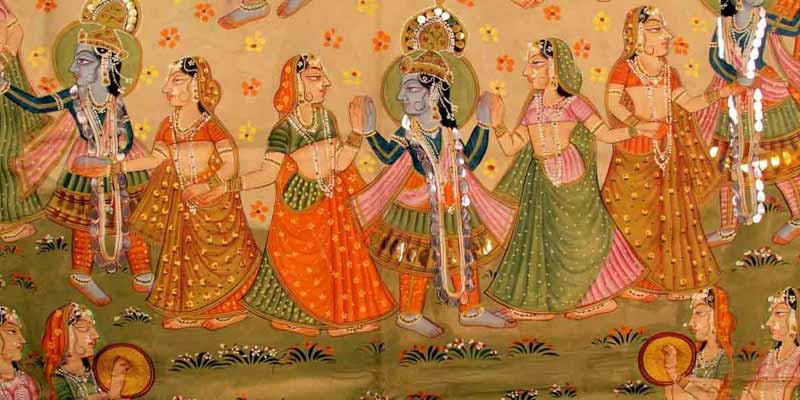
Pichwai and Phad Paintings:
Origin: Nathdwara (Pichwai) and Bhilwara (Phad).
Details: Pichwai paintings depict scenes from the life of Lord Krishna, while Phad paintings are scrolls that narrate folk tales. Both are colorful and detailed, often used as wall hangings.
Rajasthan’s traditional paintings are renowned for their intricate designs and rich cultural heritage. Two prominent styles are Pichwai and Phad paintings, each with unique characteristics and origins.
Pichwai Paintings: Originating from Nathdwara, these artworks are deeply associated with the worship of Lord Krishna. Pichwai paintings depict various aspects of Krishna’s life, his divine leelas (pastimes), and devotional themes. The art is characterized by its detailed and vibrant depiction, often featuring motifs like Krishna with his consorts, sacred animals, and divine gatherings. Traditionally created on cloth, these paintings are used to decorate the walls of temples during religious festivals and ceremonies.
Phad Paintings: Hailing from Bhilwara, Phad paintings are large, narrative scrolls that tell epic tales of local deities and heroes. These paintings are noted for their bold colors, intricate patterns, and storytelling elements. They typically illustrate the heroic deeds of figures like Pabuji, a revered folk hero. The art form is used as a visual aid during traditional performances and rituals, 7 Handicrafts to Buy in Rajasthan.
Both Pichwai and Phad paintings are excellent choices for those interested in traditional Rajasthani art and culture.
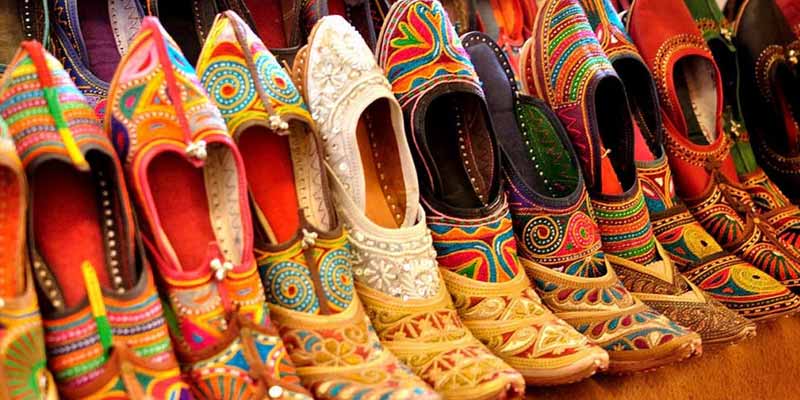
Mojari/Jutti (Rajasthani Footwear):
Origin: Jaipur, Jodhpur, and Udaipur.
Details: Traditional handcrafted leather footwear adorned with embroidery and embellishments. They are stylish, comfortable, and available in various designs.
Rajasthani footwear, including Mojaris and Juttis, is renowned for its vibrant designs and intricate craftsmanship. These traditional shoes are a staple of Rajasthani culture and make for unique and stylish souvenirs.
Mojaris: Originating primarily from Jaipur, Mojaris are characterized by their soft leather, pointed toes, and intricate embroidery. They are often embellished with colorful threads, mirrors, and beads, creating a striking and ornate appearance. The craftsmanship involves hand-stitching and decorative techniques that have been passed down through generations.
Juttis: Popular in Jodhpur and Udaipur, Juttis are similar to Mojaris but can vary in design. They are known for their comfort and durability, often featuring traditional embroidery or embellishments. Juttis are made from leather or fabric and are adorned with patterns that reflect local artistry, 7 Handicrafts to Buy in Rajasthan.
Both Mojaris and Juttis are versatile, suited for casual wear or festive occasions. When visiting Jaipur, Jodhpur, or Udaipur, you can find these traditional shoes in local markets such as Johari Bazaar in Jaipur, Sardar Market in Jodhpur, and various shops in Udaipur.
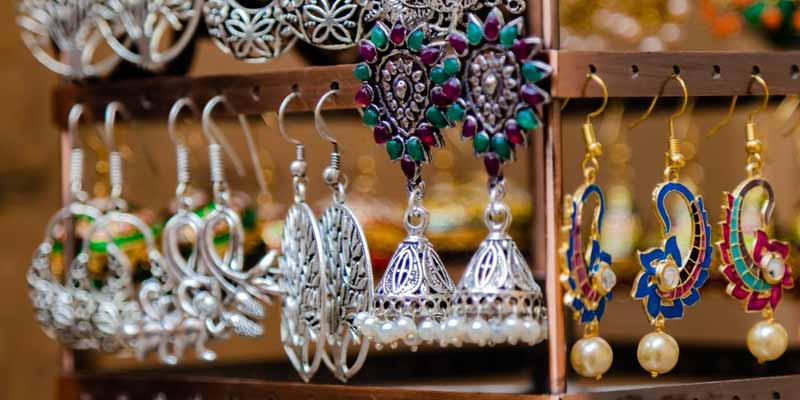
Jewelry:
Origin: Jaipur (Kundan and Meenakari), Bikaner (Lac Jewelry).
Details: Rajasthan is renowned for its intricate jewelry, including Kundan, Meenakari, and Lac jewelry. These pieces often feature precious stones, vibrant enamel work, and elaborate designs.
Rajasthan is renowned for its exquisite traditional jewelry, each region offering unique styles and techniques.
Kundan and Meenakari Jewelry (Jaipur): Jaipur is famed for its Kundan jewelry, which involves setting precious stones (such as diamonds and emeralds) into intricate gold designs. This technique dates back to the Mughal era and is known for its opulence and elegance. Meenakari, often paired with Kundan, is an enamel art that adds vibrant colors and intricate patterns to the jewelry. The combination of Kundan and Meenakari creates stunning pieces like necklaces, earrings, and bangles that reflect Jaipur’s rich cultural heritage.
Lac Jewelry (Bikaner): Bikaner is famous for its Lac jewelry, which is made from a natural resin called lac. This traditional jewelry is characterized by its vibrant colors and intricate designs. Lac jewelry is often embellished with semi-precious stones and mirrors, creating a bold and eye-catching look. The craftsmanship involves heating and molding the lac into intricate patterns, resulting in beautiful bangles, rings, and necklaces, 7 Handicrafts to Buy in Rajasthan.
Both types of jewelry are excellent choices for adding a touch of Rajasthani elegance to your collection.
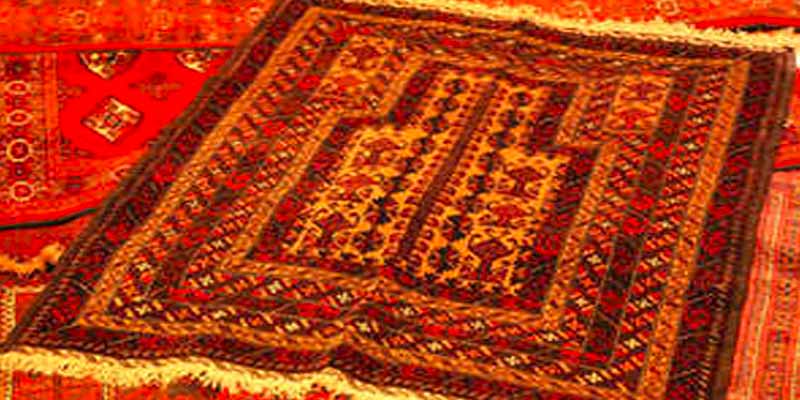
Carpets and Dhurries – 7 Handicrafts to Buy in Rajasthan
Origin: Jaipur, Ajmer, and Tonk.
Details: Handwoven carpets and dhurries made from wool or cotton. These items come in various patterns, ranging from traditional motifs to modern designs, adding warmth and style to any space.
Rajasthan is known for its rich tradition of carpet and dhurry weaving, with distinct styles emerging from Jaipur, Ajmer, and Tonk.
Jaipur Carpets: Jaipur is celebrated for its fine-quality carpets, often featuring intricate designs and vibrant colors. These carpets are crafted using traditional techniques such as hand-knotting, resulting in durable and luxurious pieces. Patterns can range from classic floral motifs to modern geometric designs.
Ajmer Dhurries: Ajmer is renowned for its dhurries, which are flat-woven rugs made from cotton or wool. Ajmer dhurries are known for their simplicity and durability, often featuring traditional patterns like stripes or geometric shapes. They are versatile, making them suitable for both decorative and functional uses.
Tonk Dhurries: Tonk is famous for its unique dhurries, often distinguished by their bold colors and patterns. These dhurries are typically handwoven with a focus on vibrant hues and intricate designs, reflecting the local weaving traditions.
Each of these regions offers distinctive and high-quality textiles, perfect for adding a touch of Rajasthani craftsmanship to your home, 7 Handicrafts to Buy in Rajasthan.



